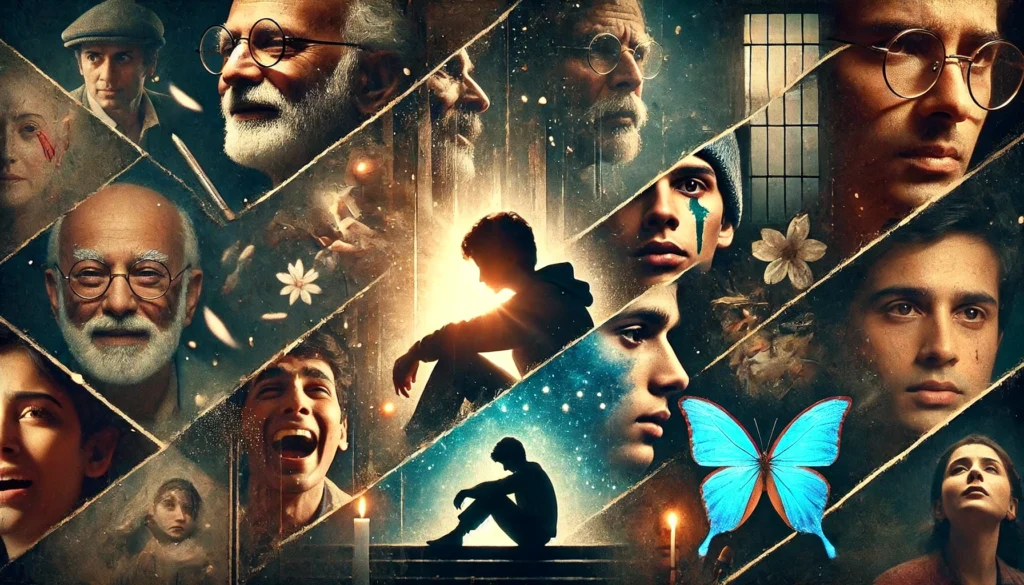Crafting Authentic Characters Through Emotional Wounds

Have you ever noticed how some of the most memorable characters in films and TV shows are the ones who carry the weight of a troubled past ? For example , Inspector Hathiram Chaudhary from Patal Lok struggles with personal demons and societal injustices, which in turn have a deep impact on his approach to his work and relationships. Similarly, in the film Kabir Singh, the character of Kabir struggles with heartbreak and addiction, showing how past trauma can lead to self-destructive behavior. These character wounds not only add depth and layers to the characters but also make them more relatable to audiences. Today, we’ll explore how to use these past traumas and emotional backstories to create compelling protagonists that will resonate with your viewers.
Let’s face it – we’ve all been hurt at some point in our lives. Those experiences shape us, leave scars, and influence how we view life , perceive and judge other people and form our relationships .
So what are these wounds – A wound could be a single devastating incident that affects the character deeply like maybe losing a loved one , a betrayal or maybe surviving a tragic incident .Or it could be a series of incidents like growing up in an abusive household or dealing with a toxic relationship ,health issues , racial abuse etc .Either ways,all this can deeply affect and heavily influence how our character turns out to be .
When we’re hurt, we build walls to protect ourselves. We develop biases, flaws, and coping mechanisms that help us deal with the world. But these defenses come at a cost. They can sabotage our relationships, stifle our growth, and hold us back from achieving our goals.
Lets learn this with an example –
Character Wound Example:
Sumona is a twenty something girl who comes from a broken family .Her father left her when she was young and her mother was self absorbed careless parent who was more interested in her affairs than raising her child .This lack of stability and love left Sumona with deep emotional scars , insecurity and a lack of self worth .
So Sumona’s wound is abandonment and betrayal from people closest to her which in turn makes Sumona feel that she is undeserving of love .
Psychological Effects:
Fear of Intimacy: Sumona finds it hard to build closer relationships with people. She self-destructs her dates or other relationships on the basis of fear that the partner may leave or cheat on her, like her father did.
Low Self-Esteem:
Sumona virtually always feels worthless and is therefore inferior to the other deserving individuals. This may manifest in her relationships and professional life .
Trust Issues:
Her mother’s behavioral pattern has made her develop a great deal of suspicion against other people. Sumona cannot bring herself to trust people and thus ends up in short meaningless relationships
Emotional Volatility:
In childhood, Sumona was an emotionally insecure person, so she may now feel anxious or have panic attacks in situations that remind her of her childhood.
Compulsive People-Pleasing:
Anxious to be accepted , Sumona may try hard to be a people pleaser to gain approval and avoid rejection
So, how do you uncover your character’s deepest wounds? Start by exploring their past. Who hurt them? What experiences left them scarred? What secrets do they keep hidden?
Maybe your character grew up with an addict parent. That could shape their fear of abandonment, their difficulty trusting others, or their people-pleasing tendencies. Perhaps they’re haunted by a past failure or a painful loss.
The idea is to dig deeper, to understand what drives your character’s motivations and behaviors. What are they afraid of? What do they hide from others? What secrets keep them up at night?
By understanding these wounds, you’ll create characters that resonate with readers. Their stories will become more nuanced, more relatable, and more impactful.
Remember, your character’s wounds are what make them human. So, take the time to explore their scars, and watch their story come alive.
Now, let’s examine iconic films to illustrate character wounds.
Rock On!! (2008): The Wound of Lost Ambition
Aditya Shroff’s (Farhan Akhtar) failing music career and problematic relationships comes from unresolved past issues and his father’s expectations. His wound is rooted in the belief that he has failed to live up to his potential.
This false belief-The Lie: “I am a failure; my dreams are not attainable “-leads to Aditya’s actions and causes him to put aside his once passion for music. However, when he reunites with his bandmates, he confronts his wound, and then the healing begins.
Taare Zameen Par (2007): The Wound of Inadequacy
Ishaan’s (Darsheel Safary) battles with dyslexia and his father’s frustrations have created a vacuum in which he feels he is good for nothing. The wound emanates from a fear of failure and inadequacy.
Through the aid of his teacher, Nikumbh (Aamir Khan), Ishaan takes on this lie of having nothing to offer (The Lie) “I’m not bright; I’ll never come out” and discovers his hidden talents and capabilities.
Zindagi Na Milegi Dobara (2011): Emotional Suppression Wound
Imran’s (Farhan Akhtar) inauspicious past with his father makes him believe emotions make him weak. His wound lies in the fear of vulnerability.
As Imran travels with his friends, he faces his false beliefs about his own self – “Emotions are a liability” – and learns to embrace his feelings, forging deeper connections with those around him.
Dear Zindagi (2016): The Wound of Abandonment
Kaira’s (Alia Bhatt) childhood abandonment and relationship issues make her believe that she’s not lovable and not good enough for a meaningful relationship . Her wound is in the fear of rejection.
Kaira seeks the help of a therapist, Jehangir (Shah Rukh Khan), to overcome false beliefs, The Lie- “I am unlovable; I am going to be alone throughout my life”-and learns to trust oneself and others.
The Fault in Our Stars (2014): Wound-Mortality
Hazel’s (Shailene Woodley) cancer diagnosis and near-death experience leave her with a deep wound, making her believe life is fleeting and love is doomed. Her false belief (The Lie) is “Love will only lead to pain.”
As Hazel falls in love with Augustus, she confronts her wound and learns to cherish the present.
The Power of Character Wounds
These examples demonstrate the transformative power of character wounds. By confronting and overcoming their wounds, characters can:
Freely break free from beliefs and limitations
Discover their strengths and resilience
Forge greater connection with other people
Find redemption and healing

Hi, this is a comment.
To get started with moderating, editing, and deleting comments, please visit the Comments screen in the dashboard.
Commenter avatars come from Gravatar.